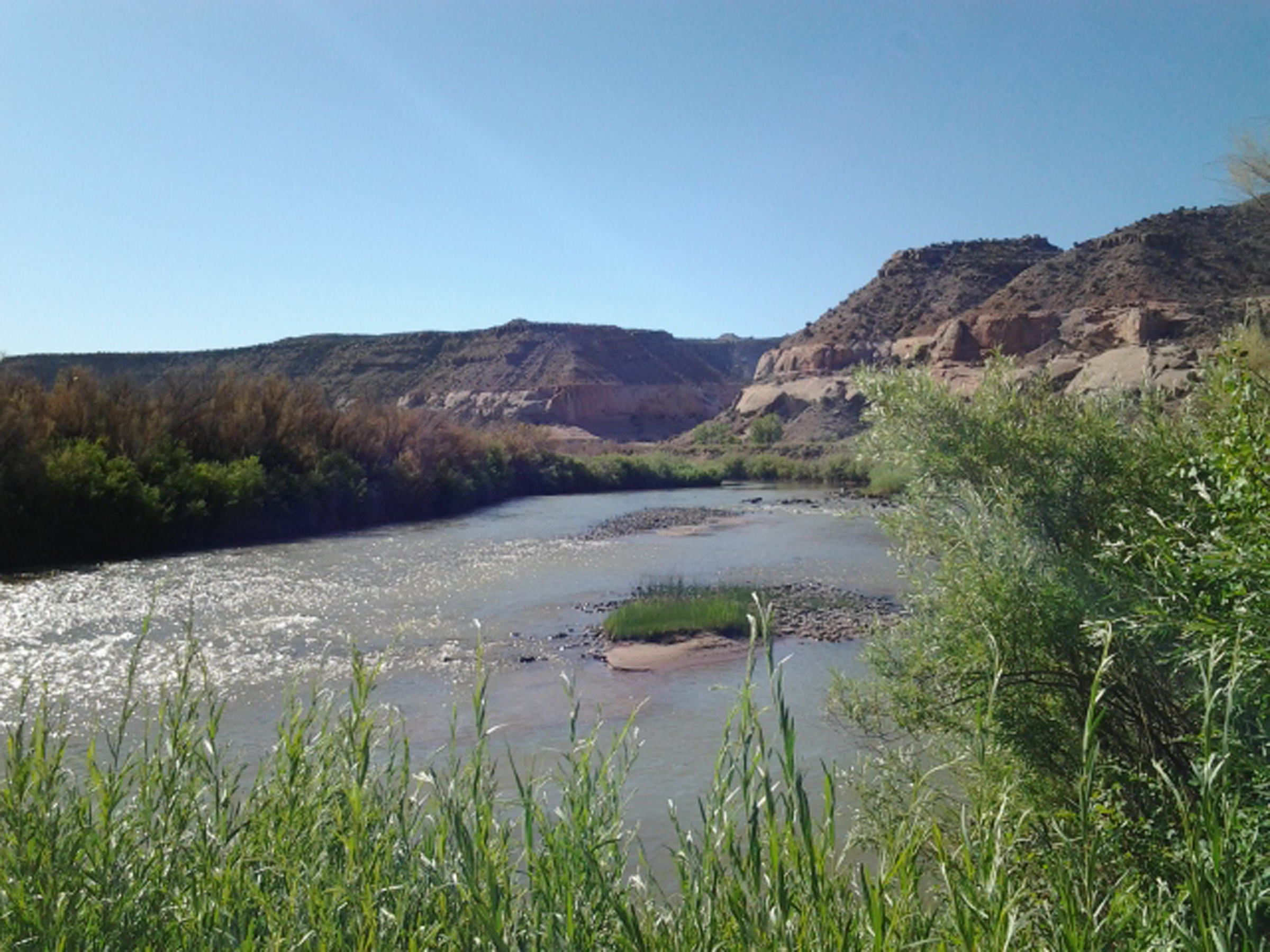
October 1, 2012 – The University of Utah and the U.S. Department of Interior Bureau of Land Management celebrated a unique partnership by dedicating a BLM-funded native plant demonstration garden at the Rio Mesa Center, a 400-acre research field station managed by the U on the Dolores River in southeastern Utah.
University of Utah President David Pershing was joined by BLM State Director Juan Palma this past weekend to tour the newest addition to Rio Mesa and to mark the institutions’ long-term partnership in an important area of the state. In addition, new facilities that will aid in the future success of the U’s long-term goals for the Center were also on display.
A new grant from BLM’s Colorado Plateau Native Plants Program will make possible the installation of a second, research-focused garden at Rio Mesa. Characteristics of native plants from across the Colorado Plateau will be studied and evaluated for potential commercial development by seed growers in the region. The new garden complements the native plant demonstration garden the BLM funded in 2011. These projects are part of a multi-year joint research program being initiated by the U and the BLM focused on biological diversity of plants in the area, as well as long-term educational opportunities.
“Rio Mesa presents an ideal environment for study and education,” says Wayne Padgett, the BLM’s Colorado Plateau Native Plant Program lead. “One of our major goals in the Native Plants Program is to provide the knowledge and technology required for restoring diverse native plant communities across the Colorado Plateau. We have created this partnership to do vital research, but also to encourage students of all ages to visit the Rio Mesa Center to experience the entire ecosystem.”
The garden will be used to increase awareness of the need for, and use of, locally-adapted native plant materials on the Colorado Plateau. Native plant species in the area are under increasing pressure from population growth, climate changes and expanding oil and gas development. Funded by the BLM, the garden was designed and installed by students from the U’s College of Architecture + Planning and students in supervised service learning projects from the U’s Bennion Center.
The garden is part of a larger expansion of the research program at Rio Mesa and a plan for developing new capabilities on site.
“Until this summer, Rio Mesa was a premier outdoor research location, with limited facilities,” says Zach Lundeen, manager of the field station. “As people have learned about the environment and programs here, user days have grown nearly 25 percent over the past year. The addition of new facilities on site will further expand the Center’s attractiveness for visitors, including those involved in a variety of valuable research activities.”
The next phase for Rio Mesa includes expanding the gardens, adding a greenhouse, a field house with classrooms, conducting joint research projects with the BLM and other partners, and creating more opportunities for the public and researchers to connect.
“A recent ‘Bat Night’ hosted at Rio Mesa, and led by the Utah State Division of Wildlife Resources, is one example of the programming that is possible,” says Lundeen. “That night, wildlife biologists set up mist-nets to catch bats as they were feeding. Our visitors were able to observe the habits of several species of bats that inhabit the area, as well as learn from the researchers about their work and its purposes. An essential component in our mission is to involve the public through education and increasing awareness.”
ABOUT RIO MESA CENTER
Located along almost three miles of Dolores River in the magnificent red-rock country of southeastern Utah, the University of Utah’s Rio Mesa Center provides opportunities for field-based interdisciplinary research that emphasizes ecology and the environment in the broadest sense. Rio Mesa Center is a real-world laboratory for integrated thinking about humans and their place in biologically complex, but fragile, systems. The Center promotes research, courses and professional training at the interface of history, anthropology, biology, art and human sustainability.
ABOUT THE UNIVERSITY OF UTAH:
The University of Utah, located in Salt Lake City in the foothills of the Wasatch Range, is the flagship institution of higher learning in Utah. Founded in 1850, it serves more than 31,000 students from across the United States and the world. With more than 72 major subjects at the undergraduate level and more than 90 major fields of study at the graduate level, including law and medicine, the university prepares students to live and compete in the global workplace. Learn more about all the U has to offer online at http://www.utah.edu.
